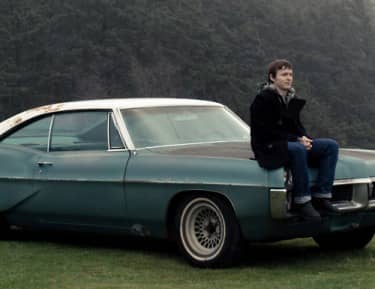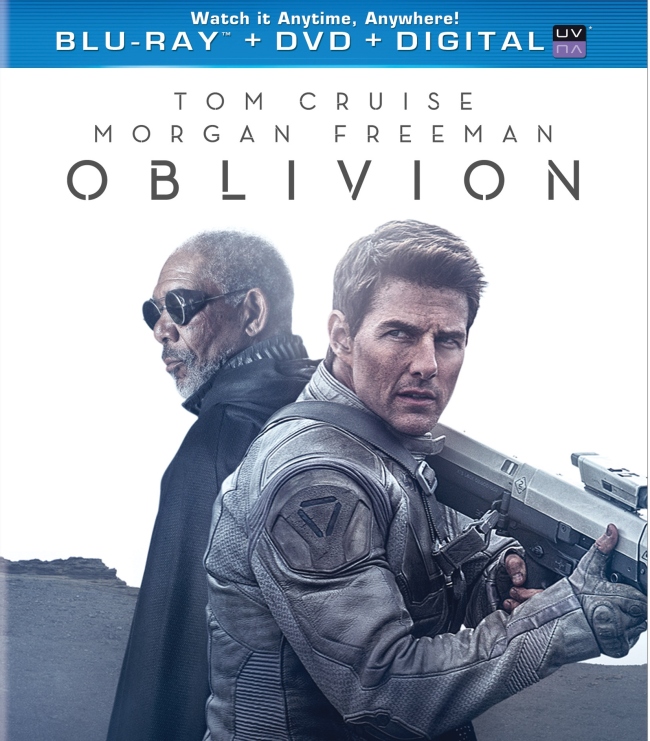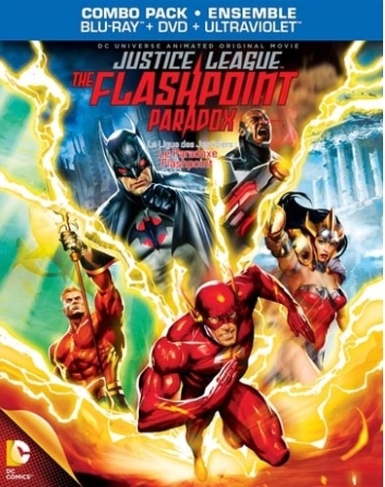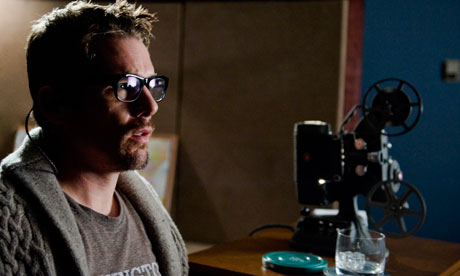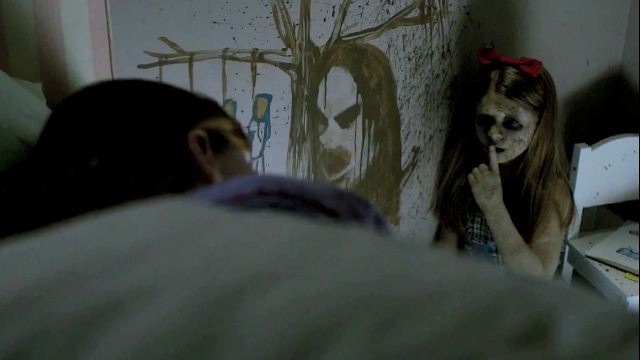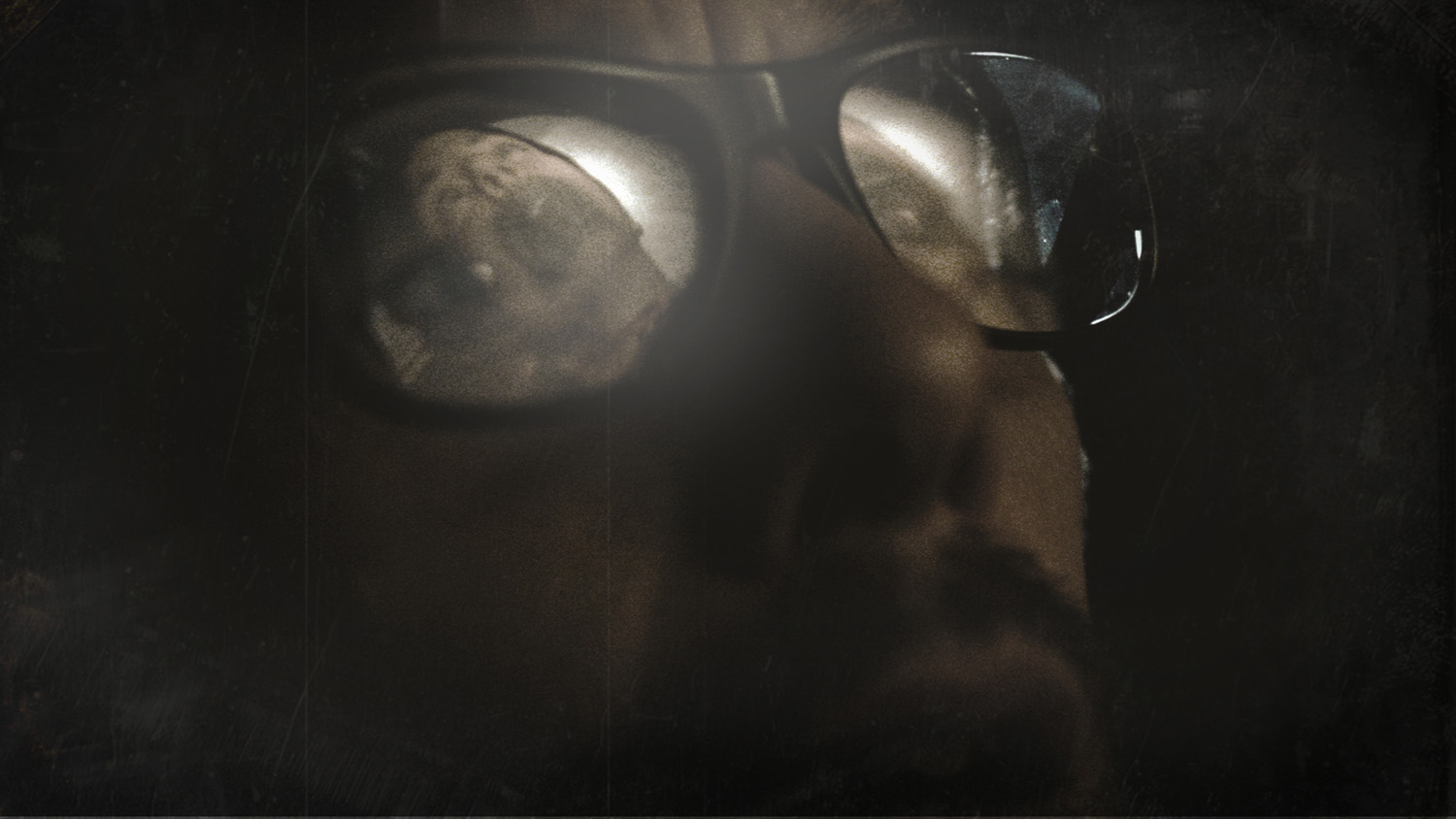
What You May Like:
- The new very human-like Wolverine
- Deep characterization and story are at the forefront
- Some very passionate and dedicated performances
What You May Not:
- Most action sequences have novice-level direction and are overly safe
- Some CGI doesn’t look as good as it should
- Hugh Jackman cannot fully tackle deeper scenes
What You’ll Remember:
- A tie between Mega RoboSamurai and Tao Okamoto’s insane level of beauty
Just when you thought we didn’t have enough X-Men films, and especially after the last silver screen disappointing display of the Wolverine character back in 2009 with X-Men Origins: Wolverine, has a very bold attempt and almost “redo” for the beloved classic Marvel anti-hero been given reigns to a more artistic and character-driven director in James Mangold; responsible for ambitious and creative, if not always successful films such as Girl, Interrupted, Walk the Line, 3:10 to Yuma, Identity, Cop Land, Knight and Day, and Kate and Leopold. Just looking at that resume can make very devoted Wolverine fans raise a few eyebrows; how can such an artistic and at times amateur-like director (Knight and Day much, anyone?) be given primary vision towards a film franchise known for its mostly devoted comic fan-service high standards and creative action reveling in eye-candy and modern special effects? The answer now being a mostly grand very well, thank you. Considering that Mangold obviously didn’t have his eye on making just another futuristic “X-Men” movie at all, bravely switches the focus to take us out of the great U.S. of A entirely and plop Wolverine directly in the face of the Japanese Yakuza political gang wars, as well as giving the clawed superhero an entirely near human-frail makeover, limiting action altogether and rather placing just as much characterization on a female counterpart, who acts much the Yin to Wolverine’s Yang. Or to further elaborate – a branded, shiny, flashy, futuristic typical X-Men film this is most definitely not, granting the audience a man who hardly feels like an X-Man at all. Mangold did not only have his work cut out for him, but treats it like his beloved baby all the way through, and much appreciated it shall be by the vast majority of movie audiences, even the most avid Wolverine fanatics.

The Wolverine‘s title alone is one that implies a character study instead of an adventure or origins tale – who is Wolverine? What are his intentions? What happens to him as a man after all the events of the previous X-Men trilogy? Surely one does not continue to fight crime on city streets, placing pick-pockets in jail and stopping low-brow alley gang fights, especially after taking down such a tremendous world-dominant force as Magneto. The answer, as the film has it, is nothing, really. Wolverine starts off as nothing more than a downtrodden, nomadic hobo of sorts, whose decision to save a Japanese military soldier decades ago from a nuclear explosion, before any other X-Men films took place, comes back to place him in the middle of a Japanese war for corporate power. Being played once again by actor Hugh Jackman, the standards the actor must now meet have been leveled up considering the overall tone and character focus here; thankfully while Jackman doesn’t have the chops to entirely steal the show, one can tell he is giving nothing less than a hundred percent. At start, we do meet Wolverine, or better, Logan (his actual character name) hiding out in a deep well bunker in the middle of a Japanese war, and takes it upon himself to save one man who is about to commit suicide after the dropping of a nuclear bomb nearby that is set to a grand extermination radius. When the young man is saved by Logan, he is dazzled and entranced by his incredible self-healing powers. Having parted ways almost immediately, we meet up with Logan decades later after all of the events of the X-Men trilogy have already taken place, including the downfall of Magneto as well as the death of his love Jean Grey, who still appears to Logan in memories and dreams, played by the always gorgeous Famke Janssen.

Having no real place in society anymore, and doing away with his superhero mutant name, our now broken-hearted and embittered protagonist sets his own small fights for justice, and in the initial instance being the inhumane death of a wild forest bear by some drunken deadbeat local town hunters. Confronting the men in a small bar, Logan is mysteriously and surprisingly confronted by a petite auburn-haired young Asian girl named Yukio, who tells Logan that the most powerful man in Japan wishes to meet with him in order to say a very long-awaited goodbye, the man being the near-dead soldier, Yashida, who owes his life to the Wolverine from decades past. From there on in, we are treated to some creative ideas for special effects as to how now old and sickly Yashida is being treated, as well as very well executed and timed comic relief, a trend that director Mangold certainly has a knack for given the refreshing amount of creative humor in Wolverine. Not yet ready for death even after so many decades, Yashida proposes to “switch” health abilities with Logan, giving his mortality to the former X-Man, who is essentially sick and exhausted from what he sees as a self-healing and immorality curse placed on him, and in turn have Wolverine grant the old dying man’s wish to be immortal, thus ensuring his narcissistic neverending reign of power over his giant Japanese corporate conglomerate. Unbeknown to Logan, Yashida’s ambitious son, Shingen, has had his eye set on his father’s death for far long, in order to take over, yet due to varying circumstances the corporate throne shall instead be passed to Yashida’s granddaughter Mariko, played with dead-on execution and impressive passion by actress Tao Okamoto, to whom Wolverine being her debut feature film. From the start, the film highlights the sheer beauty of this woman, and as does seem Logan is well to notice; Okamoto can arguably perhaps be the most beautiful Asian woman on the planet as far as yours grinch truly is concerned, and her character Makido in all her sullen and humble, yet deeply embedded bravado, presented with a loving soft-hearted kindness is the unexpected absolute show-stopper of The Wolverine.
From here Wolverine becomes a story of cat and mouse, with Logan taking on the role of Makido’s bodyguard, protecting her with a mostly unknown motivation, but perhaps due to his relationship with Yashida as his own son is dead set out to capture her and perhaps worse. This foundational plot device almost feels like something straight out of 80s and 90s action films – run away from bad guys by escaping to various locales while growing as characters together, intermixing new plot twists all the way through; thankfully the story keeps the characters consistent in their mission and even personalities, which works well to keep them relatable to us. Now it’s during this first act that we also meet Yashida’s seductively beautiful doctor alter ego, mutant Viper, played by Russian actress Svetlana Khodchenkova, most well known for her only American role in Tinker Tailor Soldier Spy. Similarly, Makido’s former love interest now self-made protector (due to a personal vow to Yashida), ninja Harada, played by Will Yun Lee; both are secondary characters but have their own motivations for eventually working to get their means finished within the overall plot, they add their own genuinely interesting twists and thrills to the film, including how significantly Viper weakens Logan’s mutant powers. Lee is nothing too special, and Svetlana does well at creating such a mysterious seductive beauty initially, but later during the film’s final act becomes sort of an afterthought, a fairly heavy-handed character, kiddish in her near plastic Barbie doll presentation, and could seriously benefit from a sandwich. These two add a good amount to the film’s enjoyment, bringing about circumstances that affect our protagonists significantly, even if they do not come off as anywhere too memorable themselves.

Even though Mangold does introduce both the main plot template and characters with standard technical efficiency, from the very first action sequence involving a raid on a local Buddhist temple from the Yakuza gang, does Mangold show that his skill to direct enthralling and thrilling action scenes feel like something from a film student with a large budget on his hands. It’s a positive that action in Wolverine is kept to a necessary minimum, because though more enclosed battles do offer some slick martial arts action in impressive and stylized flips and attacks, more broad range ones not only toss in a decent flair of disappointing looking CGI effects (that really should look much better for a 2013 Hollywood film), but contain an annoying overuse of shaky cam and close-up shots, nearly killing much of the wide range establishing foreground viewers actually need to be able to make out what sort of death-defying stunts the characters are actually going through. For example, in a scene where Harada is jumping over various rooftops to chase the Yakuza thugs, Mangold keeps the camera too close to the actor, then cutting away much of his long jumps but leaving the audience completely blind to how high the jumps are, Harada’s expressions before, during, and after them, and ultimately killing our perspective and any real thrills we are supposed to take away from the scene. The same can be said for the martial arts fighting, that are not only too closely shot, with a plethora of unnecessary edits that keep us from seeing who is actually fighting or getting hit, and where the attacks are landing, but due to keeping the PG-13 rating, even Wolverine’s own claws shed very little to no blood, even though he is continuously stabbing and slashing enemies. God forbid we get an R-rated Wolverine film, especially for an anti-hero as embittered and sinister in his approach as Wolverine. Such a safety net just feels unnecessary, and one that it seems the film itself is even discouraged with and crying to do away with. Even one great idea for a train rooftop fight does offer some gripping moments, the just average green screen work keeps it from being more than it was trying for. If you’re interested in the 3D version of the film, just take note that this one train scene is the only one where a 3D viewing would most noticed. Given how artificial the scenes comes off, it isn’t the treat one might be hoping for. In other words, don’t bother spending the extra money on the 3D version. This technical setback of action directing seems the biggest issue during the first half of the film, action sequences later on taking place in more enclosed places fare better, yet have little to do with the direction but more to do with the talent of the actors, most notably the very athletic and tough-as-nails Rila Fukushima, who plays Logan’s self-proclaimed “bodyguard” Yukio, who, for lack of a better description, kicks absolute freaking ass. There is much scene-stealing this young woman achieves as well, much that Hugh Jackman just can’t seem to do all on his own. And while it is unfortunate that Mangold’s action direction is for the most part pretty sloppy, he more than makes up for it when giving us some of the best characterization and story pacing this franchise has ever seen, which makes its audience care so much for the characters that we almost do not even notice the technical shortcomings of the more intense scenes.

Wolverine‘s focus here is primarily two different relationships – first being the one between Logan and Makido, to which there is much chemistry, most thankfully to actress Tao herself, who through a dedicated performance delivers dialogue with realistic essence and body language that goes beyond enough to charm the viewer throughout; she does it with wisdom and maturity, not by being blatantly and superficially cute. Though Jackman does meet her eye to eye for the most part in dialogue, it can become apparent that he is actually trying very hard to do so. Such effort is well appreciated, but the acting chops on Jackman’s part for deeper more serious scenes between the two do not flow naturally out of Jackman as well as from Tao, yet the story between the two is still there, and does offer so much worthwhile growth that there is very little need for any action in the end. We of course must remember though that this is primarily labeled as an action picture. The second relationship focus here is that of Wolverine himself, the continuous struggle with having to deal with this self-made protection gig over Makido, his desire to leave his superhero status and name altogether, as well as his own embittered nature due to much of the grief over the loss of his former love Jean who he simply cannot seem to forget or take steps in overcoming. Likewise, Makido can parallel Logan’s self struggles with those of her very own family, who at some point only becomes Yukio herself considering everyone else’s betrayals. Yet whatever the two endure, director Mangold’s desire and specialty for close-up shots, the ones out of place during those initial action scenes, does come as an advantage in this regard, as one can tell he has his heart invested in each character’s expressions, emotions, circumstantial fears, and sense of self. Steady use of zoom-in and establishing shots when there is more than one on screen, the viewer feels almost romanticized by their expressive fears, doubts, and subtle mannerisms, thus making way for more involving intense scenes when they just escape death by hairs; you truly start to root for these characters as they become one with the audience. This kind of direction is completely fitting with Mangold’s true artistic strengths. As mentioned earlier, all protagonists remain focused on their primary mission throughout, and while it leads to them becoming more and more reliable as people to us as the audience, it is Logan himself who comes off so vastly frail, broken, human, and real, one cannot help but ache during his weakest moments. This is the crux of what makes Wolverine so vastly different from previous X films. Are there still those typical Hollywood last minute contrived clutch saves? Of course, but at this point those are all just expected from movies, regardless of quality. Once things culminate during the film’s climactic battles, it seems Mangold gets a better sense of how to direct his final action scenes in a way that make more sense and are more satisfying. though it is perhaps just do to the fact that there are far less characters on screen. The CGI itself even begins to fare better. Overall Mangold is given a much better script to work with by the second half of the film, not that he goes about it badly the first half, but in terms of plot twists, surprises, character growth, and the revealing of newer enemies, including one of the most far-fetched yet intimidating foes in Marvel’s villain resume, a giant steel robot Samurai, Wolverine ends in a fine hoorah of bombastic action, one set to please audiences completely granted some technical quips from the first half that are easily remedied.

Final Verdict:
The Wolverine never truly fails or falls flat in any department minus the technical setbacks of the first act that may not immediately be noticeable to everyone, but despite however much better the film could be, it could very easily have been worse. Taking on a central character story after such a bomb with Wolverine’s last film outing was a risky endeavor, something that could have buried not only the character but also Jackman’s career as an action star. Fortunately, the film succeeds where any truly great film should – story and characters. Since Mangold holds such priority to bring us one with these two, Logan and Makido, this is what we’ll take away from the film most. Logan as the Wolverine is much more man than mutant this time around, in physical ability as well as complexity of heart, and his aiding leading ladies throughout the journey are brought out and highlighted just as wondrously with Makido and Yukio – two characters who do just as much to bring out Logan’s true realizations of self as Logan himself. He would have been lost without either of them, even though he was set out to protect one of them. Even going to such a detail as the Wolverine claws, they are kept to minimal use, a plot element at times to act as a character accessory the way someone like Dirty Harry is with his revolver – it never overtakes him and just feels like an arm or leg given how subtle and unobtrusive it is.
Whether Mangold does direct another adaptation has yet to be seen, and granted the sheer level of originality displayed here, that would be a wise choice, granted if the technical quips could also be addressed. The Wolverine is fast-paced, funny, fully entertaining, emotionally gripping, and could be argued as on par or even better than the last X hit, First Class. It’s great to see that a franchise would take such a risk as to worry more about people than effects, even if in the effects department things could have been a bit more realistically portrayed, regardless if the teenage crowd would be turned away due to an R rating or not. Given the level of emotional depth and plot investment, the film is quite honestly more geared towards mature audiences anyway. Let’s hope any sequel bring just as much and more. Definitely recommended, a strong and bold 3 Yakuzas out of 4. Add a half Yakuza if you’re already a fan of the X film series.

Sergio's Home of Poetry and Creative Writing



